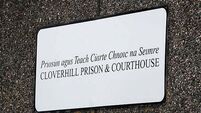VIDEO: How Jaws invented the summer blockbuster

LOOK up the list of the all-time biggest grossing films and you’ll find that Avatar still lords over all with a box office take of almost $2.8 billion.
Drill down into the list and you’ll find an anomaly nestled between 2012’s Wreck-It Ralph and last year’s The Lego Movie. It is a film that grossed $470.7m worldwide. Not bad for a movie released in 1975. Not bad for a movie that was the Avatar of its time, the biggest grossing film ever made until it lost its title to Star Wars. In today’s money its revenue would put it snapping at the heels of Avatar with a haul of about $2bn.
The fact that this 40-year-old film did such good business in cinemas is the least interesting thing about it. This is a film that literally changed summer - not just in terms of blockbuster releases; it changed how people entertained themselves at the beach. This is a film that struck fear into an entire generation; real fear, wildly irrational lift-your-feet-off-the-floor get-out-of-the-water fear. This is a horror film with just five deaths in it (not counting the dog) and two of them go unseen. This is a monster movie that was forced to hide its all-too-fake creature for most of its running time because the special effect wouldn’t work properly. This is a film that should have sunk to the bottom of DVD bargain bins for ever, only to be hooked by B movie afficionados. This is a film that should not have worked.
But it did. And it changed everything. This is Jaws.
What lies beneath
One hundred years ago it was a kind of a myth that sharks attacked humans. This changed with the Jersey Shore shark attacks during the baking hot summer of 1916, in which four bathers were killed and one was injured. The New Jersey beaches were packed due to the heat and a raging polio epidemic. Newspaper headlines began with ‘Shark kills bather off Jersey beach’ and quickly escalated to ‘Armed posses comb coast to snuff out man-eating sharks’. The deaths became sensational national news, and panicked people began reporting maneating sharks up and down the east coast of the US. Flotillas of boats set out to kill as many of the creatures as possible. Suddenly, people realised that they could become prey while they took a dip in the sea. It didn’t help that some scientists - who were still in the dark about the shark behaviour - were describing the toothy fish as “sinister”.
The scene was set for a fictional account of shark attacks to ride the wave of hysteria. It wouldn’t come along for another 60 years.
Pulp fiction
In 1971, Peter Benchley was a struggling writer pitching book ideas to publishers. He had two in mind: a non-fiction book about pirates; and a novel about a community terrorised by a shark. Benchley had been fascinated by news reports about a fisherman landing a 4,550lb great white off Long Island in 1964 and coupled that with his knowledge of the Jersey Shore attacks. Doubleday took a punt on Benchley’s book in 1974 and instantly netted itself a bestseller. It was inevitable that the film studios would come swooping down like a flock of seagulls.
What happened next was a series of lucky breaks and forced decisions.
Steven Spielberg was just a young buck director with a TV movie called Duel and a first feature film called The Sugarland Express under his belt. The 26-year-old was under pressure by Sugarland’s producers - Richard Zanuck and David Brown - to follow up with another picture as soon as possible. While visiting their offices, Spielberg spied a copy of Jaws, read it and urged them to give him the job. They agreed, giving Spielberg $3.5m and 55 days to do it, with a finishing date of June 1974.
READ NEXT: This is what it’s like to watch Jaws for the first time
Seasonal fare
In the early ‘70s, studios released their biggest movies during the peak cinema-going periods - primarily Christmas. It was generally regarded that asking people to spurn the summer sunshine for the gloom of a film theatre, even for only a couple of hours, was vastly optimistic and commercially insane. A quick look at the release dates for some of the biggest films prior to Jaws shows studios avoided the warmer months: Love Story (December 1970); The French Connection (October 1971); The Godfather (March 1972); The Sting (December 1973); and The Towering Inferno (December 1974).
Jaws was destined to be no different. It was earmarked to make its debut around Christmas 1974. However, a famously troubled shoot finally wrapped in October after 159 miserable days.
‘The shark is not working’
There were three reasons why Jaws drove its cast and crew to the brink of insanity. The first was natural - Spielberg admitted much later that he was “naive about the ocean”. Shooting on location at Martha’s Vineyard gave him the perfect place to depict a middle-class vacation hotspot and its relatively shallow coastal waters offered his special effects team the environment to control the film’s monster.
The second reason was mechanical - the shark utterly failed to work. We should say ‘sharks’, since there were three - all called ‘Bruce’ after Spielberg’s lawyer. The sharks sank, cracked, bloated, blew air hoses, suffered from corrosion, and generally misbehaved. The crew began to call the monster epic ‘Flaws’. In return, Spielberg called the team handling the sharks the ‘special defects’ department. Instead of focusing on the leviathan of the deep, the director was forced to allude to its presence and rely on his cast to heighten the tension.
The third reason was personal - Spielberg faced problems on all fronts. The smalltown politics in Martha’s Vineyard took an age and a lot of diplomacy to untangle, with council members digging their heels over every fake building and location shoot. The director’s crew also gave him headaches, constantly bemoaning the nightmare shoot and telling him to his face that he was finished because the film was going to flop.
Then there was his cast. None of the main actors who made it aboard the Orca were first choices for those roles. The central part of Chief Brody was initially offered to Robert Duvall, but he wanted the meatier part of Quint. Charlton Heston made a play for Brody, only to be nixed by Spielberg who thought that having him at centre of things would distract audiences from the sense of peril. (Moses v shark is no contest.) Roy Scheider got the part after overhearing Spielberg talk about the film at a party. His well-received work in The French Connection helped seal the deal. Meanwhile, fisherman Quint was offered to Lee Marvin and Sterling Hayden but eventually went to another actor fresh off a bona fide hit. British thespian Robert Shaw - who died of a heart in 1978 while driving to his home in Co Mayo - was part of the box-office smash hit The Sting. Lastly, the role of ichthyologist Hooper was supposed to have gone to either Jon Voight or Jess Bridges until George Lucas recommended Richard Dreyfuss. Shaw clashed with Dreyfuss and it took all of Spielberg’s draining influence to keep his actors from quitting.
Like a dark cloud over all of this was the threat from Universal of either shutting down the overbudget and overdue picture or parachuting in a studio director to finish it quickly and send everyone home. Zanuck and Brown, the duo who were writing all the cheques, arrived at Martha’s Vineyard and swiftly understood what Spielberg was trying to accomplish. They let him finish the film and waited for the test audiences to let them know if their gamble would pay off.
Everything up to this point was not unheard of in Hollywood. Directors got fired all the time. Films went unfinished or taken from their owners. What happened next with Jaws would change the way we think about summer.
The power of TV
Early showings - in March 1975 - led to such a positive reaction from audiences that Universal realised they had a monster hit-in-waiting on their hands. “That was the first time I realised that the shark worked, the movie worked, everything about it worked,” Spielberg later said. Popcorn flew, people were violently ill and Universal rubbed its hands with glee.
The studio set about ensuring that everyone knew what was coming. They spent almost $2m on marketing the movie. Jaws became the template for what has become commonplace. An unprecedented $700,000 was spent on TV ads beamed into millions of homes. That’s about $3m in today’s money. Who in the spring of 1975 could not have been enthralled by the menacing 30-second spots accompanied by that dum-dum theme and growling voiceover: “It is as if God created the devil and gave him … Jaws!”
John Williams’ score proved pivotal. His two-note hook is Jaws. It is the shark. It is the sound of fear. Spielberg admitted that the film would not have been as successful without the music.
The result of the TV campaign was phenomenal. Jaws opened on June 20 on 464 screens across North America, growing to 700 in July and almost 1,000 in August. (Ireland and Britain had to wait until December.) It became the first film to net over $100m at the US box office. People flocked to the cinemas in the sunshine and got the wits scared out of them in the dark. Jaws wasn’t just a film, it was an event. It was the very first blockbuster.
The Jaws effect
In its wake, studios ripped up their release schedules and business models. They wanted - and needed - to follow with high-concept summer movies, to tap into the willingness of the masses to flock to the cinemas just as readily as they would go to the seaside.
Sharks came to fore of the public consciousness for the first time since the Jersey Shore attacks 60 years earlier. Unfortunately, the film was blamed for a surge in shark deaths, with fishermen eager once again to hook a blood-thirsty monster. There was anecdotal evidence of a decline in package holidays as people decided that it wasn’t safe to go in the water.
However, counterintuitively, Jaws did sharks a huge favour. Before 1975 almost everyone was ignorant of these fish. After 1975, everyone wanted to know if they really behaved like the one in the movie.
The film that changed summer
Spielberg’s film changed the way Hollywood engaged with the public and the way the public engaged with the sea. It changed the summer. An entire generation cannot wade into waist-deep water without thinking about Jaws. And it’s not just middle-aged people. There’s evidence to prove that a new generation has also been affected once they discover the film. R&B star Rihanna was born 13 years after Jaws was released and recently revealed how its theme affected her: “If I happened to get in the water, my dad would hum the theme music, and I was right back out of it.”
Today, we know that great white sharks are cautious loners who very, very rarely take bites out of surfers because they mistake them for seals. And sharks in general are graceful creatures with no interest in tasting human flesh. But does 40 years of scientific research and endless nature programmes and Shark Week marathons nullify that seed in our minds, that primal fear of what may lurk beneath the waves, put there by a 40-year-old film featuring a wonky rubber shark?
Not one single bit. Jaws was blown to bits, but our terror lives on.












